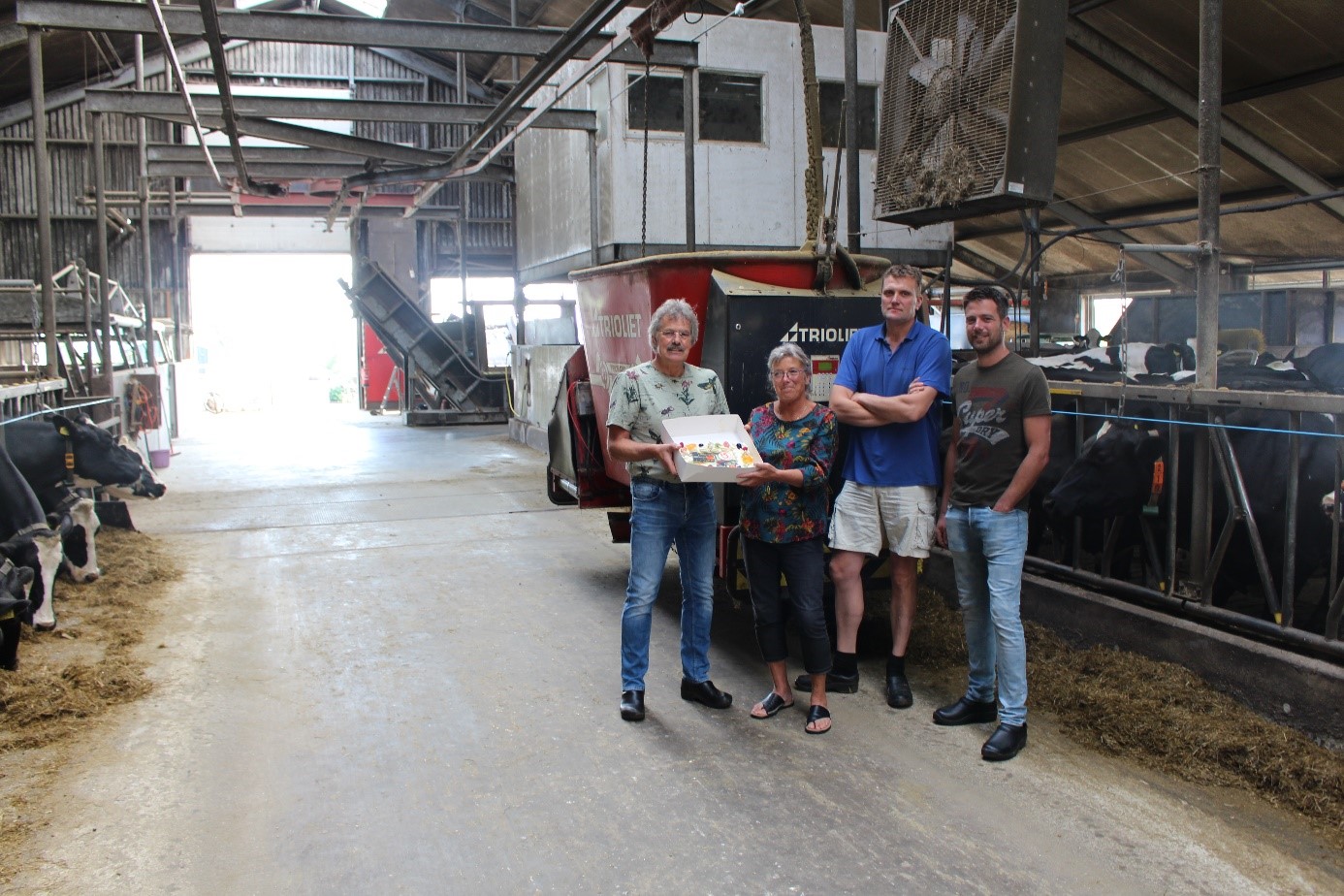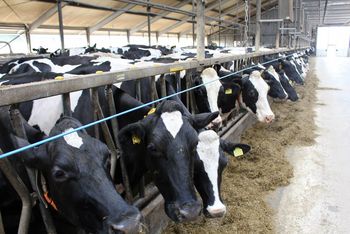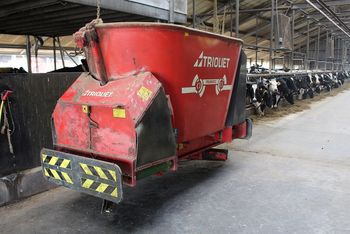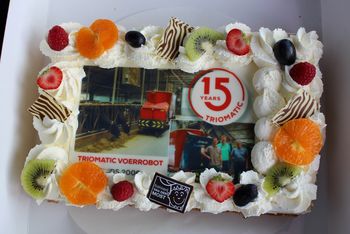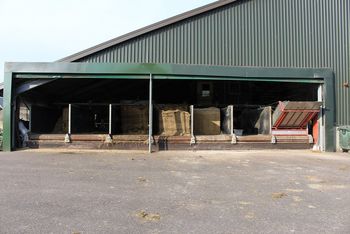It is always pleasant to visit with the Petter and Herman van Dijk family at the Ommerkanaal dairy farm in Ommen. This time we met Henry and Arie Petter sitting at the kitchen table, and then Annie joined us after pouring a cup of wonderful coffee for the guests and serving them with a delicious slice of cake. The cake features a nice photo of Herman, Arie and Henry in front of their feeding robot in the feeding alley of their dairy farm. “Wow, has it been 15 years since we launched our Triomatic automatic feeding system? Time flies!”
The conversation quickly turns to September 2006, when the Triomatic T40 at the Ommerkanaal dairy farm started feeding the 250 dairy cows. After a quick calculation, we come to the conclusion that this Triomatic feeding robot has provided more than 150,000 feed turns in the past 15 years! And as always in the past 15 years, the stable is in good shape and the Triomatic T40 is still in excellent condition.
At the kitchen table, Henry Petter proudly talks about his experiences and achievements with his Triomatic over the past 15 years. Petter is the farmer who pioneered the development of the first Triomatic automatic feeding system. Henry: “It has brought us more than we could have ever imagined. In particular, the flexibility in scheduling is a big plus. We can now work a few days in advance without having to worry about it. You can cut out blocks and load them into the feed kitchen whenever you want. And the pecking order in the herd is gone because there is always fresh feed, and the fixed feeding times and high feeding frequency are important. That brings peace to the stable. The heifers are doing well above average in the herd.”
Better and more efficient
An advantage of the automatic feeding system is that it allows the farmer to control feeding very precisely and thus achieve the best yield. Henry: “The high feed efficiency is due to many different factors. What matters is the total (cost) picture. We try to get as much yield as possible from our own roughage. Our aim is not to get more, but instead to be better and more efficient."
The Ommerkanaal dairy farm has been using grazing for 4 years now. In the summer, the number of feed turns for the dairy cows drops from 12 times a day to 8 times a day. The weekly labour required for feeding ranges from 2.5 hours a week in the summer to about 5 hours a week in the winter. Previously, feeding was done for two hours a day, meaning about fourteen hours a week. “With the Triomatic, feeding only costs us an average of 4 hours of effort per week. About 80 tons of roughage per week go through the system, and about 80 kg of residual feed remains. That's about 1 part per thousand. We can also feed several groups, several times a day, so there is always fresh food. It is even possible to compose a small ration for three dry cows."
Return on Investment
With the last bite of cake, I ask the gentlemen about the payback time of their automatic feeding system. The dairy farm is writing off the investment in the automatic feeding system over 20 years. “The investment for the Triomatic T40 automatic feeding system was approximately €200,000. We are now at the three-quarter point, and the system will easily last another five years.” After we add up the savings in terms of labour, energy costs (diesel fuel and electricity) and residual feed, and then add the maintenance costs to this, we arrive at a return on investment (ROI) period of 8 to 9 years. Henry adds: “What do you put in and what do you get out of it? You have to look at the bottom line, that's what matters. As a livestock farmer you have to be able to think in the long term and act accordingly. And sometimes a slightly higher investment is more economical in the longer term.”
